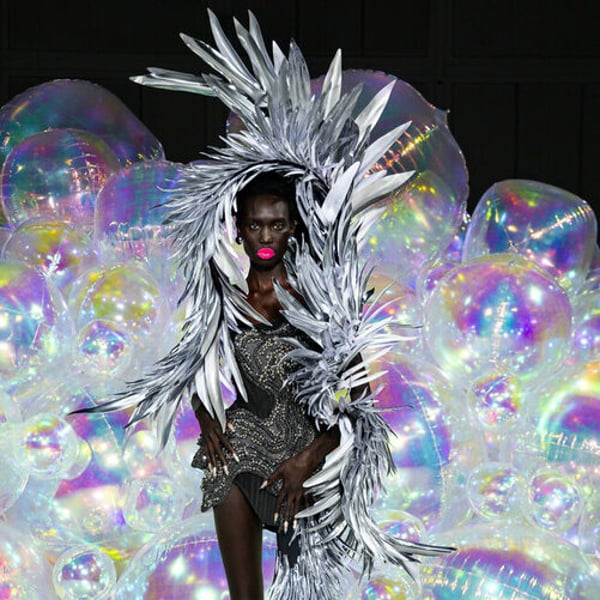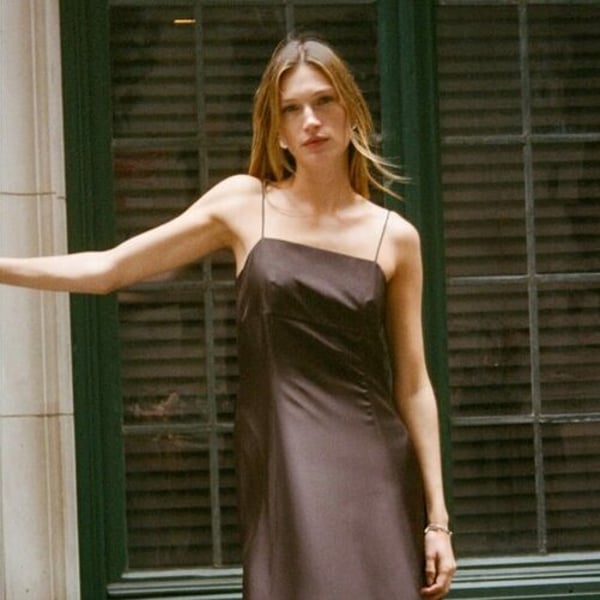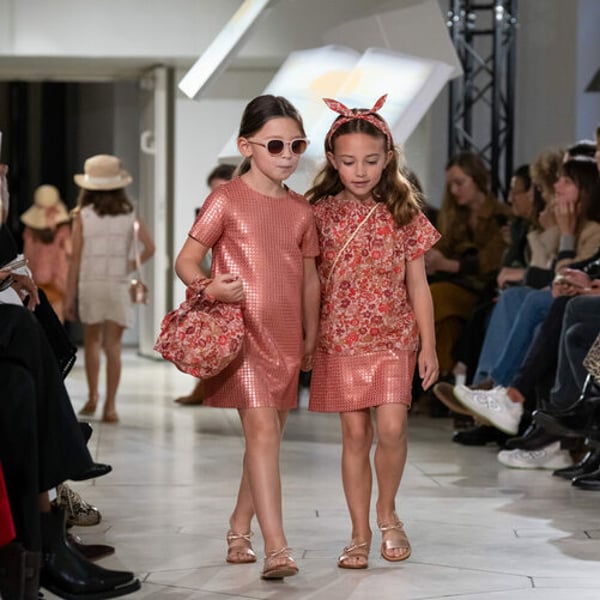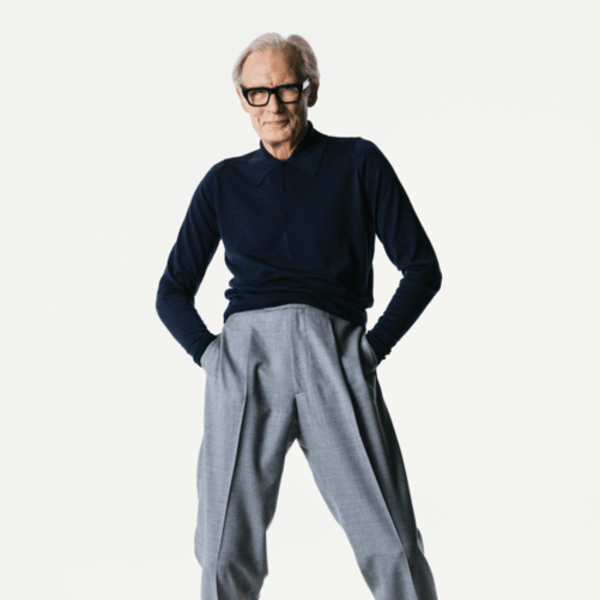Paris couture will always be a study in contrasts, never more so than its final day, when Syria’s Rami Al Ali, Switzerland’s Germanier and New York’s Jordan Roth presented wildly different visions of fashion and art.
Rami Al Ali: Damascus renaissance

At the risk of sounding facetious, one of the happy by-products of the end of the tragic and awful Syrian civil war is that its good citizens can finally enrich their own culture and creativity again.
Case in point, Rami Al Ali, the Syrian-born and Dubai-based couturier, who presented a fresh and feminine collection that lovingly employed techniques from his own native country and echoed the unique architecture of Damascus.
“Now, after almost 15 years, we can begin again focusing on our heritage and skills, and breathe again,” commented Rami, whose title for this fall/winter 2026 collection was “Guardians of Light.”
A couturier clearly in full command of his atelier, Rami sent out some beautifully finished silk lattice dresses that evoked the famed Al-Azm Palace with his geometric Ottoman-era facades composed of contrasting limestone, sandstone, basalt and marble.
While curvy tulip sleeve gowns recalled the arches of Damascus’ legendary caravanserai Khan As’ad Pasha. And one felt a sense of the dense floral and script style of Islamic art within the capital city’s great museum, Jami’ al-Darwishiyya, when witnessing a splendid spring green semi-sheer dress in tulle finished with sequin motifs shimmering like Iznik tiles.

These historic spaces—once alive with calligraphers, woodworkers, metal artisans, and weavers—echo once more, reinterpreted through modern couture, Rami explained in his program notes.
His goal: to elevate craftsmanship beyond technique into cultural memory, working in tandem with the Syrian Crafts Council, to ensure every piece carries a traceable thread to Syria’s heritage, updated for today.
Composed in the hues of golden dome, alabaster, viridian and lapis, the collection received loud applause when Rami took his bow inside the rooftop show-space of the Palais de Tokyo.
An elegant fashion statement, and an important reminder to those of us who have been privileged to have visited Damascus, the world’s oldest capital city, blessed with a unique ensemble of antique and classic art and architecture and truly hospitable citizens.
Germanier: Recycle and roll

Kevin Germanier is a Swiss fine artist born in the wee village of Granges, barely a thousand people up in the Alps, whose mania for playful experimentation and full-on recycling has made him into a cult figure in fashion. His budget is modest, his ingenuity very rich.
For his second couture show, and the last of the four-day Paris season, Kevin was, if anything, even crazier than ever with his maximalist mélange of polka dots, snakeskin, painted leopard, stripes, all fused into bold silhouettes in psychedelic color.
Entitled “Les Joueuses,” or “The Players,” the collection was certainly very playful, and supported by two figures standing on the sidelines, dressed like Salvador Dali’s remake of the Teletubbies.
Above all, Kevin is a great image-maker, from his sequined silver surfer with dragoon boots and a mini skirt made of mini shiny balls, to his coral-hued beaded jacket with mock sunflowers, the show opened with great energy.
Staged inside the IRCAM, the experimental music center, the cast walked around a massive center-point made of scores of meter-wide iridescent balloons. This set design will be entirely upcycled next season into sequins, said the environmentally admirable couturier.

Before the mound, marched models in outlandishly exuberant balloon dresses, or intensely colored sculptural raffia dresses with huge trains, made in collaboration with Brazilian artist Gustavo Silvestre. The wildest looked like Carmen Miranda on acid.
Mashing up upcycled leather, previously used for Eurovision, reworked and crystal-stressed to a couture level; recycled Japanese paper; thousands of beads and pearls.
Models don’t really wear Germanier collections, they inhabit them. Given his mind-blowing imagination, some smart producer should really hire Kevin Germanier to costume a major feature film; that way, millions of people can enjoy this young man’s talent. And not just the 400 people at this show.
“We’re living through heavy times, politically, socially and economically. I believe that my role is to bring light — that’s what drives my work, and this collection is a direct response to that. I wanted joy on the runway,” insisted Kevin Germanier. He achieved exactly his desire.
Jordan Roth: Son & lumière for a Nike from New York

Jordan Roth is a Broadway producer and the rich son of a very rich property magnate, Steven Roth. Roth junior has been a noted VIP shopper in couture for many years. No Balenciaga or Schiaparelli show is complete without an appearance by Jordan in some very dramatic women’s look.
This season, instead of being a mere front row fixture, Roth decided to stage his own work of performance art, and being very well-off, he hired the Cour Marly inside the Louvre for the Thursday night event.
In effect, it was the final happening of the Paris season, attended by scores of editors, art honchos and designers like Thom Browne and Michele Lamy.
The display happened in three acts. First, a group of young men and women in the sort of gentlemanly garb Edwardian gents would wear to a science lecture – albeit in ecru – marched around an elegant, crumpled white ball gown in awe. Before, an even wider-eyed Roth, in studied incredulity, was finally dressed inside the gown, apparently inspired by an empress gown by John Galliano. A one-minute operation that lasted a good ten.
Next, a teeth-grindingly slow march up past the sculpture of epic athlete Milo of Crotone and famed stone equestrian statues taken from the Chateau Marly, and placed underneath I. M. Pei’s giant glass roof. Where Roth – in a chignon, makeup and three-inch nails, then lived out his fantasy as the goddess Nike, or contemporary Winged Victor of Samothrace. Thrusting into the air, 15-meter-long wings, decorated in a light display with various feathers. The original is probably the most visited museum statue in the world. Some 400 people turned up for the first of three performances.

With the soundtrack pumping out lush orchestral sounds, 49-year-old Jordan, entered a huge sheath dress and ascended into the heavens, the fabric billowing into the shape of a pyramid. The ancient Romans once built Cestius a pyramid in thanks for organizing feasts and public banquets. Jordan managed it by just being born rich.
Bringing us to the climax, where a light projection reproduced Pei’s exterior glass Louvre pyramid and various works of art by Ruben and Mantegna on the dress, the largest ever in a Paris couture season.
Entitled “Radical Acts of Unrelenting Beauty,” this show was themed around the museum’s current novel show, “Louvre Couture,” where great works of fashion are placed beside important works of décor and art.
Was this a mini fashion moment, or a self-indulgence load of twaddle by the son of the largest commercial landlord in New York, and occasional partner of Donald Trump? Judging by the modest applause at the finale, opinion was divided. But one thing is for sure, Paris will always love an American with artistic pretensions and chutzpah.
Copyright © 2025 FashionNetwork.com All rights reserved.







